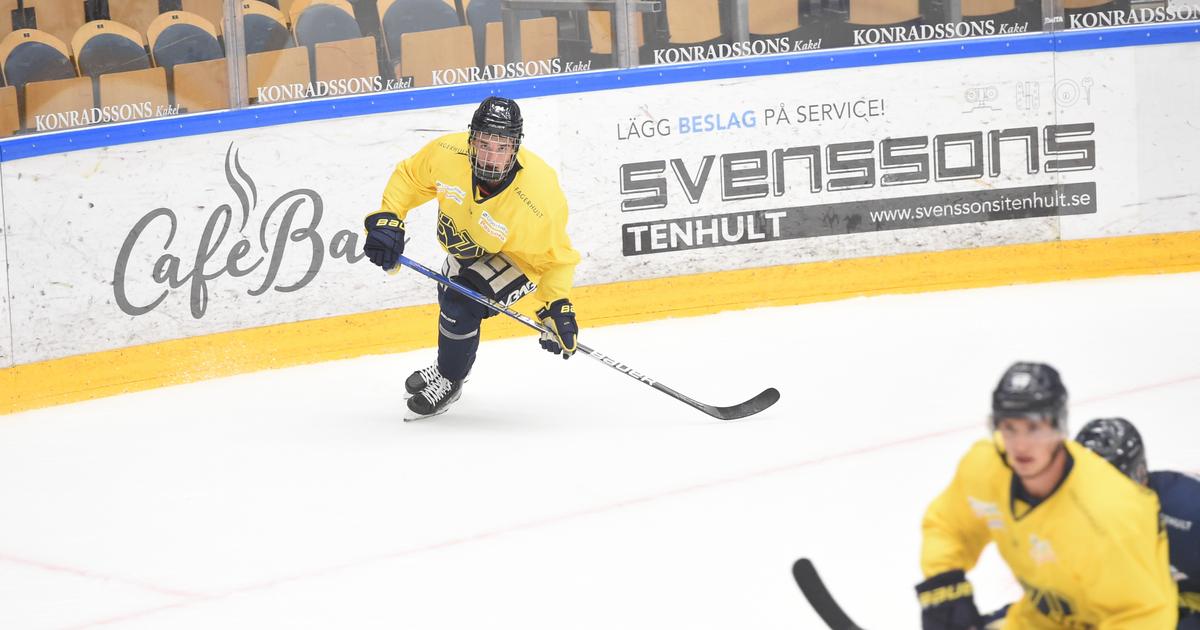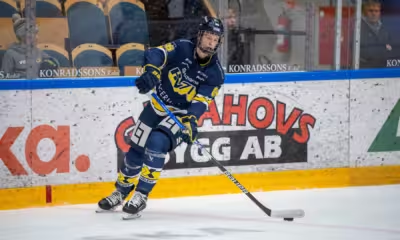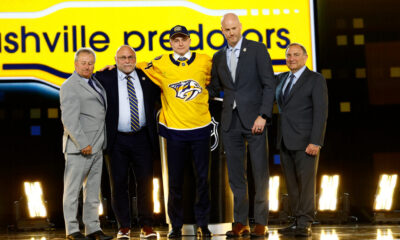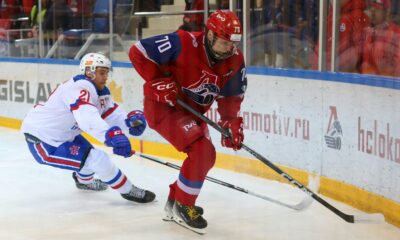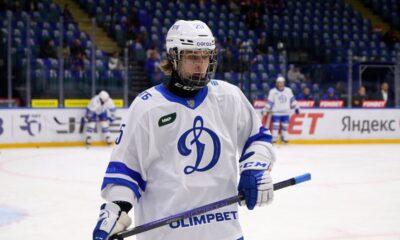Acquired from Tampa Bay in the recent Ryan McDonagh trade, the Nashville Predators will be picking 213th overall at the NHL Draft this weekend. While seventh-round picks rarely have long pro careers, Nashville has hit on a few in franchise history, including Martin Erat, Patric Hornqvist, and Juuso Pärssinen.
This week, I’m picturing what Nashville’s draft board could look like for each of their picks at the 2024 NHL Draft. As always, this will include prospects the Predators should target or may already be connected to.
Edvin Nilsson | D | HV71 J20 (J20 Nationell)
Edvin Nilsson is a difficult prospect to project. Some evaluators think he’s worthy of a mid-round pick and some probably wouldn’t draft him at all. I’m closer to the former camp, but I think he could be available in the seventh round. The Swedish blueliner stands at 5’11” and around 180 pounds. He spent most of the year with HV71’s U20 team, scoring four goals and 14 points in 34 J20 Nationell games. But Nilsson was also loaned to HC Dalen of the third-tier HockeyEttan where he picked up 17 games of experience and three more points.
The left-shot defender reminds me a bit of Adam Wilsby in his draft year. He doesn’t have the biggest frame, but Nilsson flashes most of his shifts. The first item that stands out is his skating. His mechanics are excellent; his knee bend and stride extensions are consistent with every step, he keeps his chest upright, and his strides recover nicely under his torso. His crossover steps, including linear ones used in transition, are properly explosive, and the smoothness of his pivots gives him great change-of-direction quickness.
Nilsson is a great asset in transition, charging up the ice with his skating skills and highlighting his puck distribution skills. He scans the ice as he moves at top speed, triaging potential decisions before executing a crisp pass. In the offensive zone, he patrols the blue line actively, providing good passing options to his teammates. I’m higher on his shooting skills than others as he won’t just throw empty shots at the net. He’s confident in stepping into open slots and firing a quick wrister.
Defense is the big question mark in Nilsson’s game. In my viewings of him, he rarely closed his gaps at the blue line, allowing opponents valuable space in his defensive zone. He’s not particularly physical, so even when he uses his feet to work a puck carrier to the perimeter, he struggles to dislodge the puck. The upside is that Nilsson is headed to the University of Massachusetts in 2025, and I struggle to think of a program better suited to improve those defensive habits. Given that, he’s an intriguing late-round option.
Martin Haronik | G | Team Slovakia U18 (Slovakia)
The Nashville Predators’ goalie pipeline isn’t particularly deep. The franchise hopes, of course, that Yaroslav Askarov will be their starter for years to come. But behind him, Ethan Haider, Juha Jatkola, and Gustavs Davis Grigals don’t look to have a significant NHL future (I’m not even counting Konstantin Volkov anymore). So with a plethora of picks, why not take a flyer on another goalie? Enter Martin Haronik.
Ranked fifth amongst European goalies by NHL Central Scouting, Haronik is a 6’5″, left-catching netminder from Slovakia. He bounced around his home country this year playing a handful of games on the junior circuit but spent most of his time with Slovakia’s U18 program in the nation’s second-tier league. He also joined the national club for the World Junior A Challenge and the U18 World Junior Championship, playing behind some shoddy defense.
The pros to drafting Haronik start with his size. Even if the days of 6’5″ and up goalies dominating the league are behind us, it’s hard to pass up a prospect of his stature. And despite being on the bigger side, Haronik moves pretty well, covering his angles post-to-post without being the fastest.
Haronik’s glove hand is stronger than his blocker side, which was exploited from time to time this year. He fights for positioning well and tracks pucks perfectly fine. When the play breaks down in front of him, he can get a little floppy with his positioning lunging toward the puck. But all in all, his raw skills show a good foundation to be developed, especially if he ends up taking the college hockey route.
Tanner Henricks | D | Lincoln Stars (USHL)
If you’re looking for an offensive mastermind this late in the draft, Tanner Henricks is not your guy. But if you’re looking for a 6’3″ right-shot defender that skates pretty well, here he is. Henricks is a California native who skated for the USHL’s Lincoln Stars this year. He posted just nine assists in 59 games plus another helper at the Hlinka Gretzky Cup, but his stat line can be deceptive.
The St. Cloud State commit looks the part of an NHL defender. When you throw good skating skills on top of his stature, he becomes even more intriguing. Henricks’ stride extensions are a bit shallow at times, but otherwise, he moves well, keeping up with speedy puck carriers and executing timely pivots to maintain his gaps. In the defensive zone, he’s physical, using his size to disrupt cycles and dislodge pucks. He also uses that frame for puck protection purposes, winning battles deep in his end before dropping solid first passes.
There’s a simplicity to Henricks’ game that you have to appreciate. He’s a fine passer and is all-around sound with the puck. He won’t dazzle you with dekes, but he’s generally responsible when it comes to advancing the puck out of the defensive zone.
Henricks will jump into the rush and play with a bit of elasticity around the offensive blue line, but his putrid scoring stats are a true indicator of how involved he’s willing to get. That being said, I do think there’s more to give in that department. With more development, he can quarterback an offensive attack and get a little more creative in his transition play. Henricks will never become Evan Bouchard, but I think there’s a solid two-way defender here.

